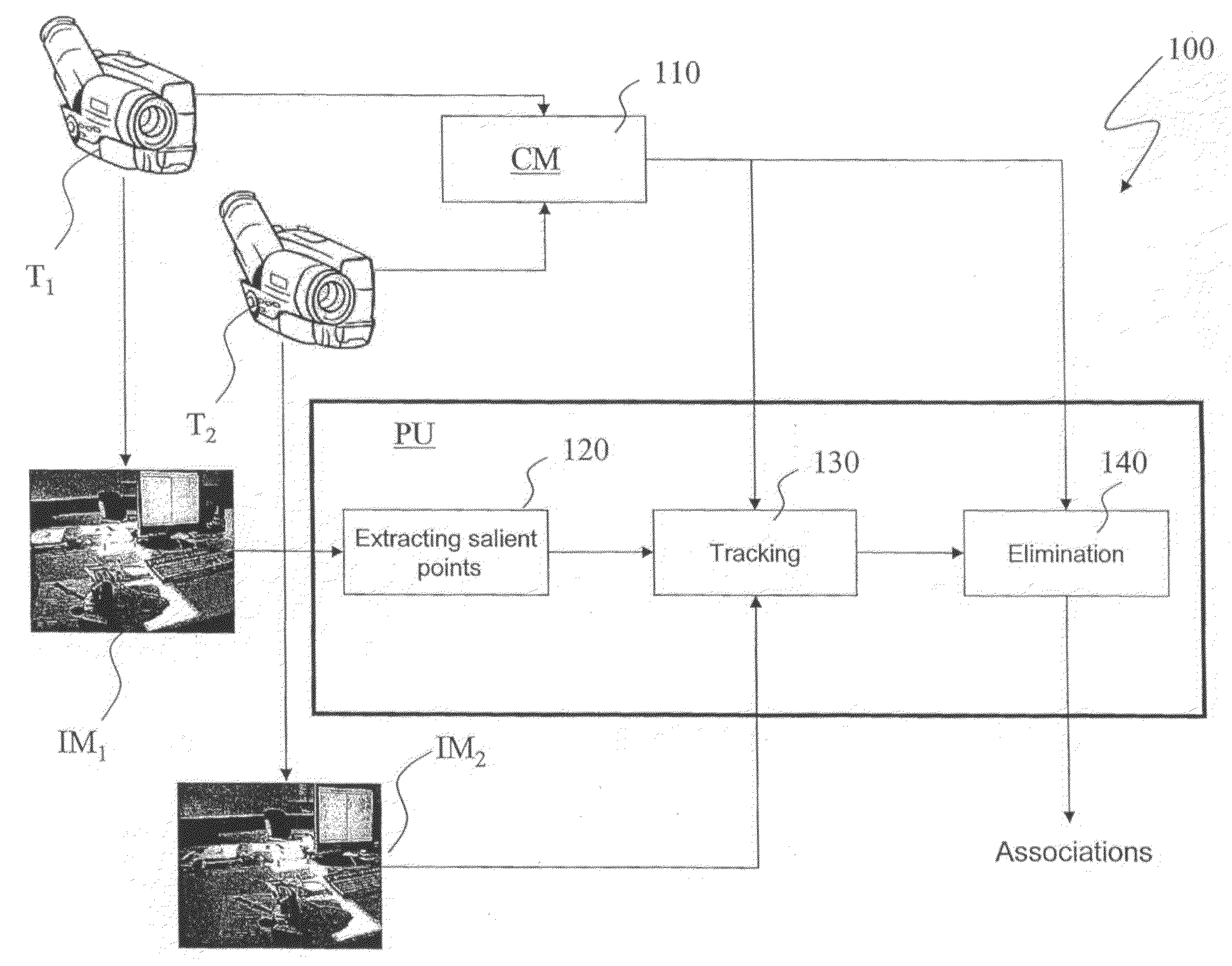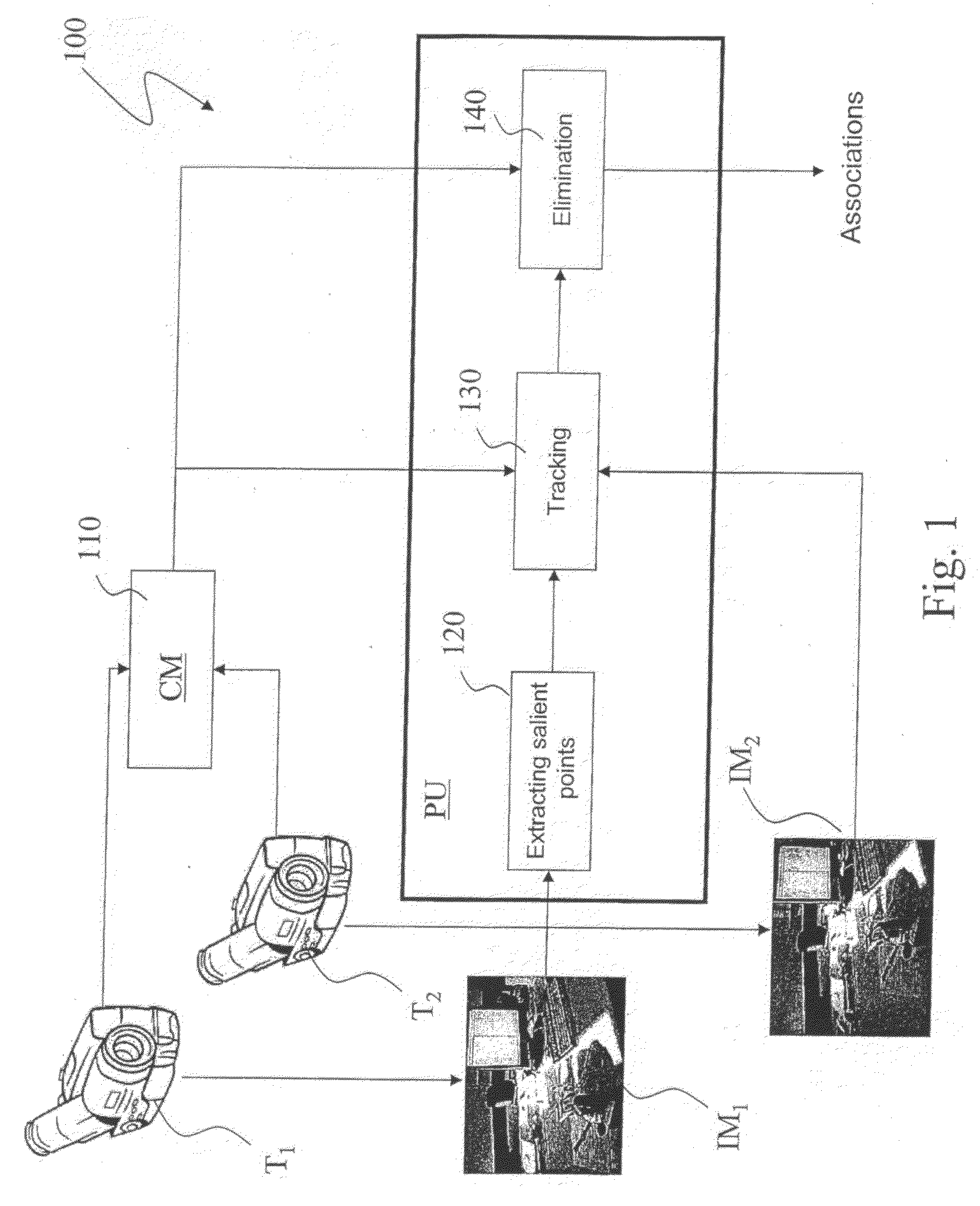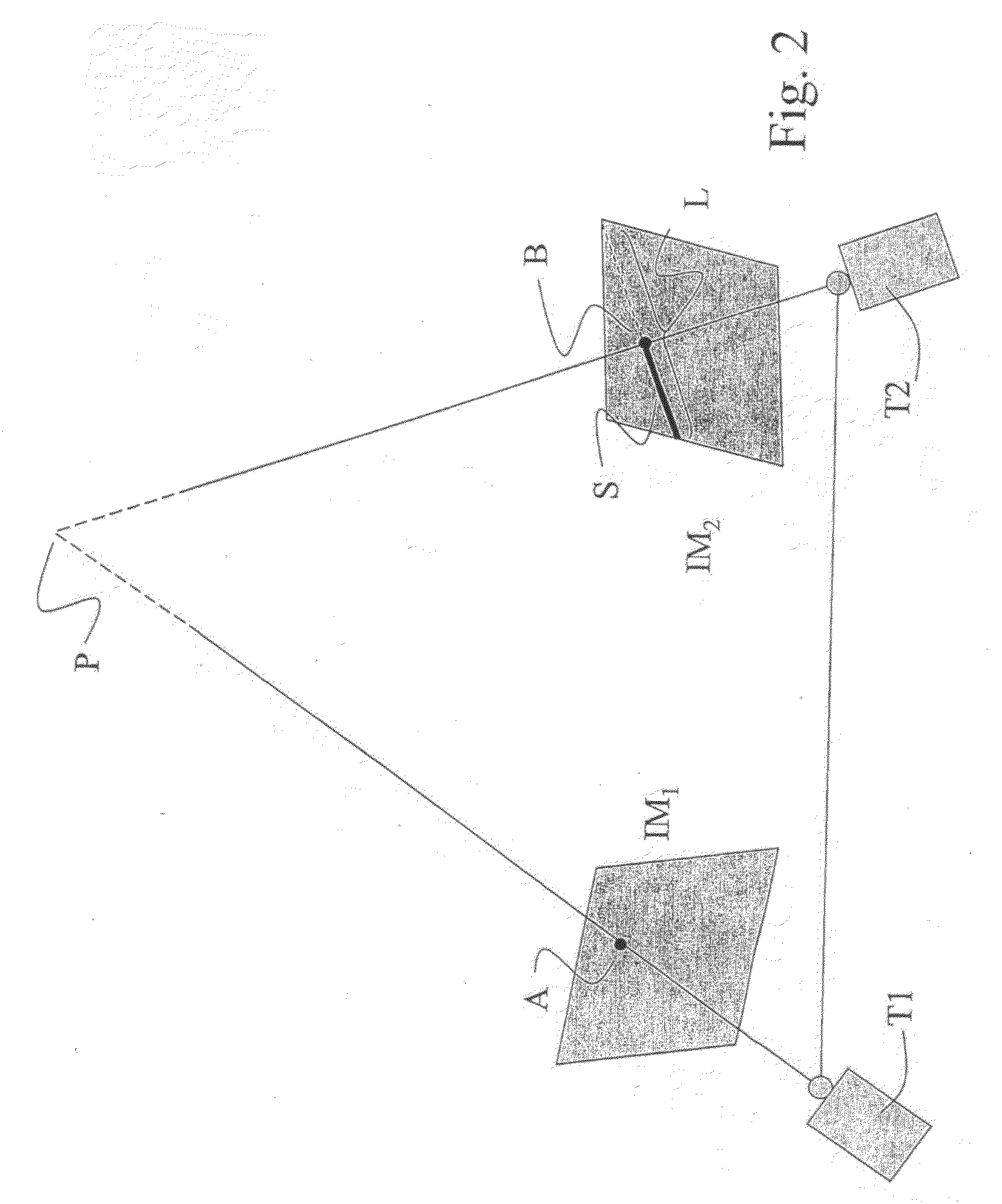Method for Determining Scattered Disparity Fields in Stereo Vision
a technology of stereo vision and disparity field, applied in image analysis, image enhancement, instruments, etc., can solve the problems of klt technique not exploiting the fundamental, subject to errors or inaccuracy, etc., and achieve the effect of improving the quality of extracted disparity field and accurate results
- Summary
- Abstract
- Description
- Claims
- Application Information
AI Technical Summary
Benefits of technology
Problems solved by technology
Method used
Image
Examples
Embodiment Construction
[0024]With reference to FIG. 1, 100 designates as a whole a system for video shooting with many cameras. In particular, the system 100 is capable to shoot from different positions of the same scene and to determine the scattered disparity fields between the thereby shot images.
[0025]The system 100 comprises a first camera T1 and a second camera T2, both capable to generate respective digital images (or frames) IM1, IM2 of the same scene. The two cameras T1, T2 can be oriented towards the scene as mutually parallel or mutually slanted.
[0026]The system 100 further comprises a processing unit PU, connected to both cameras T1, T2, and capable to process digital images IM1 and IM2 received from the two cameras T1, T2 to obtain a scattered disparity field according to the method described below. Moreover, the system 100 comprises a camera calibration module CM, preferably a software module being present in the processing unit, or in a separate unit, capable to supply the processing unit w...
PUM
 Login to View More
Login to View More Abstract
Description
Claims
Application Information
 Login to View More
Login to View More - R&D
- Intellectual Property
- Life Sciences
- Materials
- Tech Scout
- Unparalleled Data Quality
- Higher Quality Content
- 60% Fewer Hallucinations
Browse by: Latest US Patents, China's latest patents, Technical Efficacy Thesaurus, Application Domain, Technology Topic, Popular Technical Reports.
© 2025 PatSnap. All rights reserved.Legal|Privacy policy|Modern Slavery Act Transparency Statement|Sitemap|About US| Contact US: help@patsnap.com



